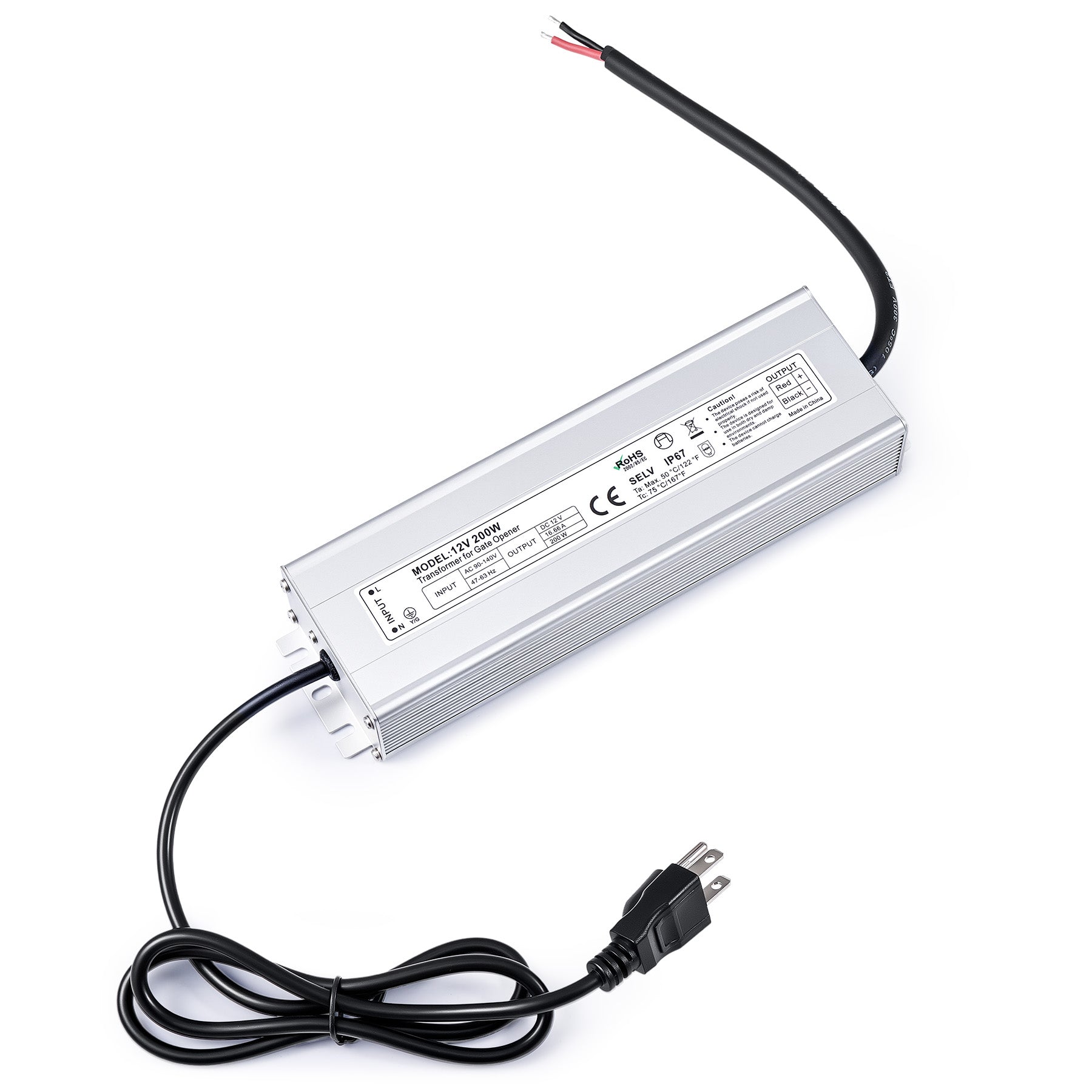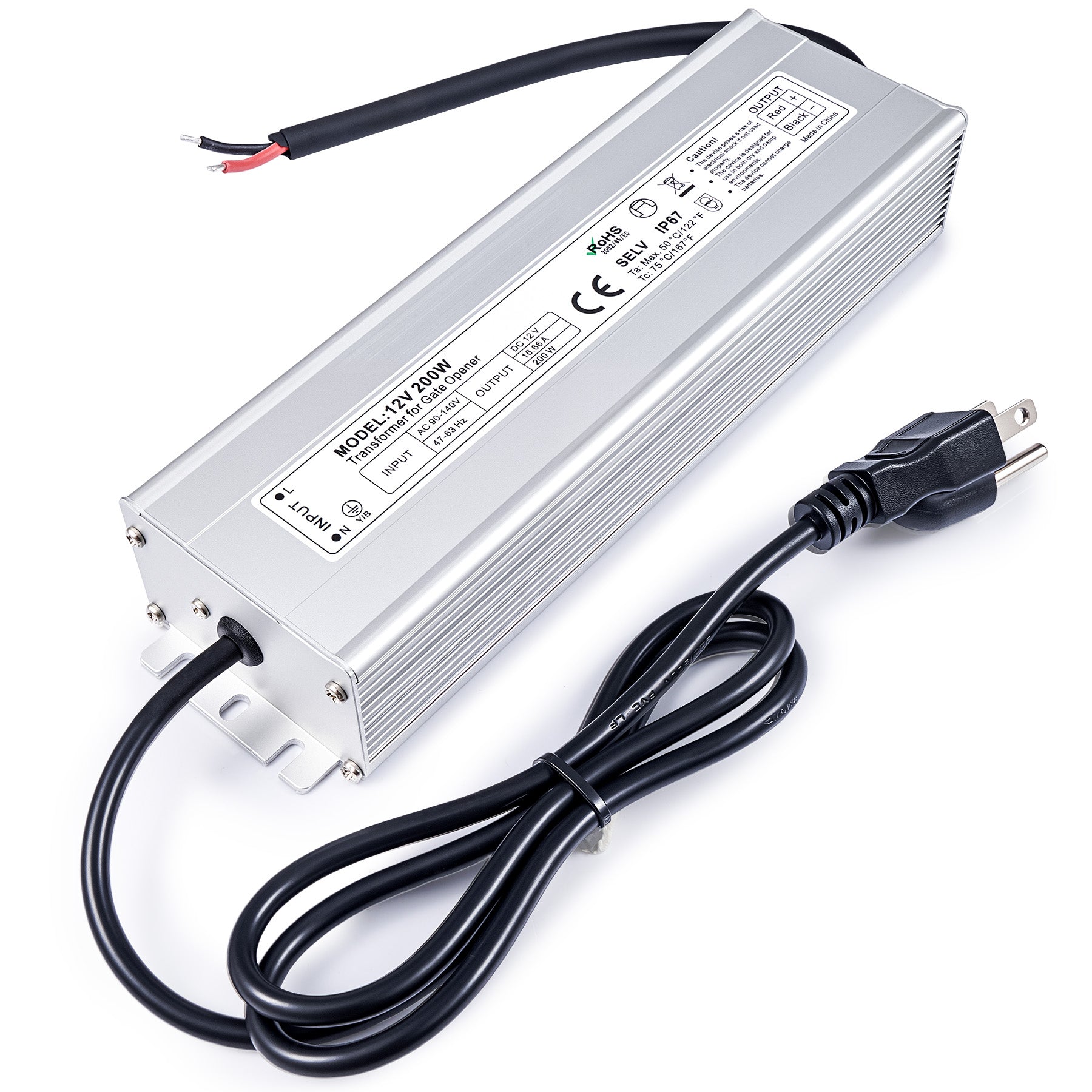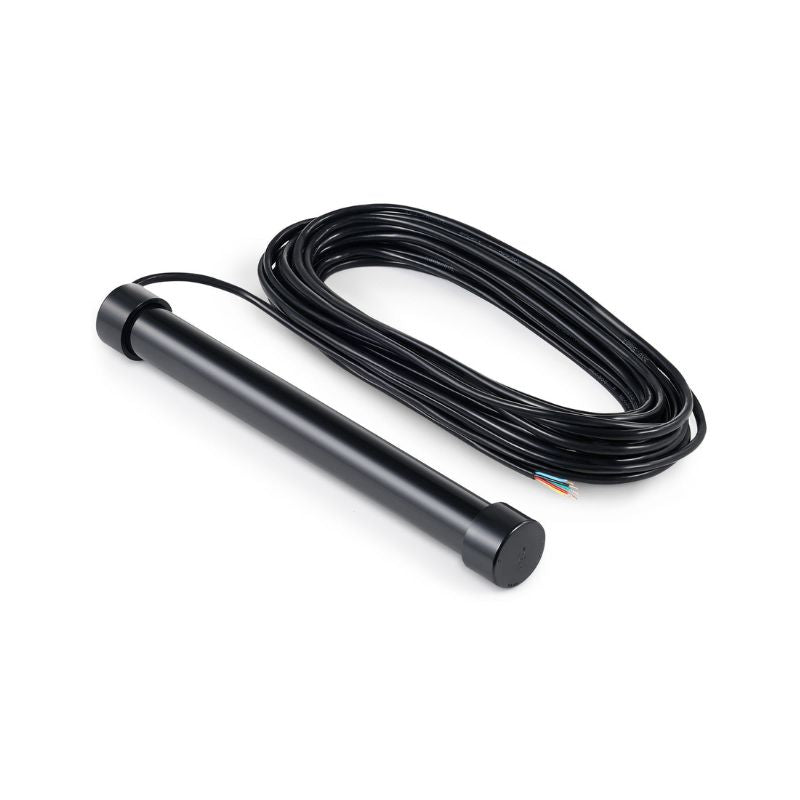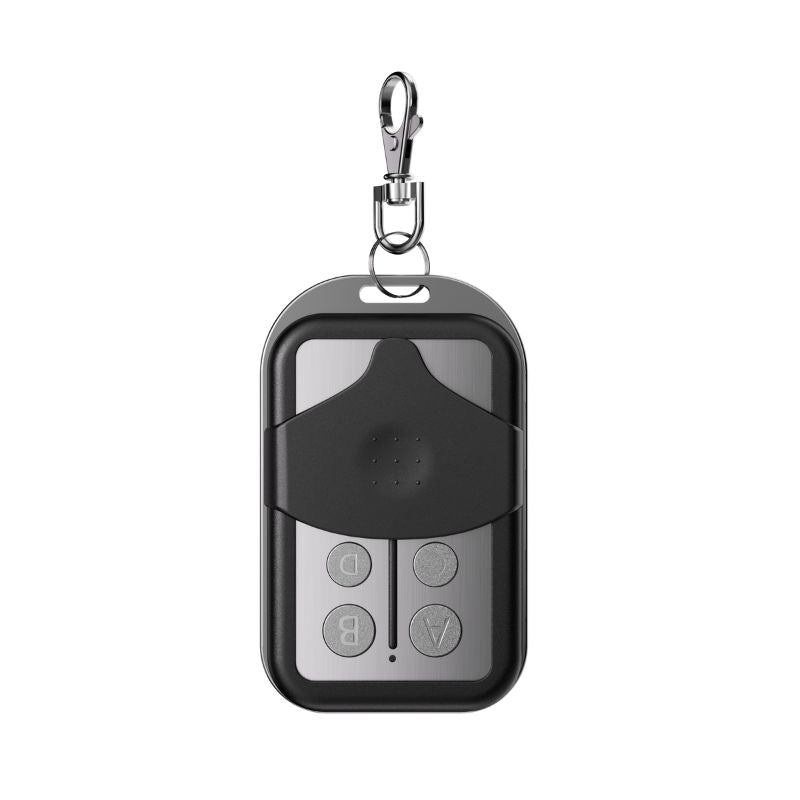So, you have just gotten your gate opener, and you are looking forward to a time of peace, privacy, and security. Well, in order to enjoy all those amazing benefits, not just as a new owner but also in the long term, you have to set it up properly and maintain it regularly. This blog will help you do so by going over some vital information you must be aware of: some prominent mistakes to avoid that could ruin your experience and spoil your product. Take note that this is not a replacement for the product manual but just an explanation of some significant points. That said, let's get into it.
RULE #1: DO NOT INSTALL IN AREAS PRONE TO FLOODING, STANDING WATER, EXCESSIVE HUMIDITY, LOW-LYING AREAS, OR ANY FORM OF WATER ACCUMULATION
EXPLANATION
Excessive moisture, flooding, and water accumulation will cause severe damage to the essential parts of your opening system, potentially leading to malfunctions, reduced lifespan, and costly repairs.
- Electrical Short Circuits: The electrical components that power and run your gate opener’s system consist of motors, control boards, and wiring. Exposure to moisture can cause them to short circuit, which would cause your gate opener to malfunction, suffer a system failure, or even electrical fires.
- Corrosion and Rust: Prolonged exposure to water will cause the metal parts of your gate opener to rust and corrode. With worn-out metals, the lifespan of the gate is significantly reduced. Besides, repairs or replacements of these parts are often extremely costly.
- Damage to the Motor and Sensors: The motor that powers the gate is particularly vulnerable to water damage. If water penetrates the box holding the motor, it could cause the motor to seize up or burn out, and your gate will be completely ruined.
- Flooding would also damage the gate’s safety sensors and control systems, leading to malfunction or failure. A gate with damaged sensors behaves unpredictably, and may not stop even when an obstacle is in its path. Better to avoid such a safety risk.
- Potential for Electrical Shock: Water is a conductor of electricity, so if the gate opener is submerged or wet, it could pose a serious risk of electrical shock to anyone who comes into contact with it.
- All components provided by this device are weatherproofed to withstand normal rain. Ensure
- adequate insulation and protection of all electrical connections, and never directly pressurized water against any part of this device.
RULE # 2: DO NOT INSTALL CLOSE TO POTENTIAL HAZARDS OR RISKY AREAS
EXPLANATION
Always aim to minimize public exposure to potential hazards such as pinch points. Failure to do so may result in serious property damage and severe personal injury. In addition to pinch points, here are other types of hazards to avoid. Here is a list of hazardous areas to guard against.
- Explosive Atmospheres: Any area where flammable gases, vapors, or dust are present is a red zone for your gate opener system. Installing your gate opener in an area close to flammable or explosive fumes is hazardous because it contains electrical components, such as the motor and electrical wires, which can produce sparks or heat up while the gate opener is in use. If these sparks or heat sources come into contact with flammable or explosive fumes, they could ignite the fumes, leading to a fire or explosion.
Moreover, your gate opener has moving parts, which could cause friction and generate static electricity. In a hazardous environment, this could be another source of ignition. To ensure safety, installing gate openers in areas free from flammable or explosive fumes is crucial. So, installing the gate opener close to chemical plants, fuel storage facilities, or locations near gas stations is a terrible idea.
- Areas with Extreme Temperatures: Also, avoid installing the opener in areas such as industrial freezers and furnaces where the temperature is extremely hot or cold for extended periods of time. Some components can be extremely sensitive to temperature extremes and eventually fail, causing the opener to malfunction.
RULE#3: DO NOT USE IF ANY COMPONENT IS MISSING, LOOSE, WORN, OR DAMAGED
EXPLANATION
A malfunctioning gate can pose a significant risk to persons and property. When parts and components fail, the gate may start to close too quickly or unexpectedly, which can injure people, pets, or damage vehicles. Also, if the gate doesn’t close or lock properly due to worn or damaged components, it can create security vulnerabilities, making it easier for unauthorized persons to access your property.
- Damage to the gate opener: Continued use of a gate opener with faulty parts can lead to structural damage to the gate itself. For example, if there is a misalignment caused by loose components, the gate might warp or become misaligned.
- Motor Overload: A damaged or worn component can cause the motor to work harder than it should, leading to overheating or burnout, which could require expensive repairs or replacement.
SAFETY MEASURES
- Tighten, repair, or replace problematic parts before further use. Only replace components with identical parts, and always fully replace damaged electrical cords.
- Keep your gate well maintained and its hinges free of grime and debris. Periodically confirm that it runs smoothly under manual operation.
- Maintain the gate and the gate opener system to ensure that the gate continues to swing freely and is level throughout the entire swing path.
- Lubricate regularly, check the battery's condition every few months, and check all connections at least annually.
RULE#4: NEVER ALLOW CHILDREN TO PLAY ON OR AROUND THE GATE OPENER OR THE GATE IT IS ATTACHED TO
EXPLANATION
Gates are usually heavy and can cause severe injuries to a child who gets caught or trapped while the gate is closing. There is the risk of broken bones, head injuries, or even fatalities. Also, gates often have moving parts like hinges, rollers, or tracks that can pinch or crush fingers or limbs and result in painful injuries.
Gate openers are often triggered by remotes or sensors, and they can activate unexpectedly. A child playing near the gate may be caught off guard and unable to move out of the way in time.
Some gates have a delayed reaction when opening or closing, which can mislead children into thinking they are safe, only for the gate to start moving suddenly.
Clothing or Toys: Loose clothing, strings, or small toys can get caught in the gate mechanism, pulling the child towards the moving gate and putting them in serious danger.
Climbing Hazards: Children might be tempted to climb on the gate or its components. They could fall or become stuck in dangerous positions.
PREVENTION
Keep controls away from children and out of their reach at all times, and warn them of the gate’s danger. Do not allow them to attempt to “race the gate” by driving through it while it is opening or closing.
RULE#5: DO NOT IGNORE GATE REQUIREMENTS WHILE INSTALLING
EXPLANATION
Make sure you follow the installation guide when setting up your gate opener. Do not ignore these guides, no matter your level of exposure to and experience with gate openers. Here’s why that matters:
You Could Expose Yourself to Safety Hazards
When installation is not done properly, the safety features of the gate opener, such as sensors or emergency stop functions, could become compromised, increasing the risk of injury to people or pets. For example, if the safety sensors are not correctly aligned, the gate might not stop or reverse if it encounters an obstacle.
Crushing Hazards: Gates that are not appropriately installed may not have the correct force settings, which may lead to excessive force during closing. This could cause fatal damage to anyone in the gate’s path.
You Would Face Operational Problems
If it is not properly installed, the gate may operate erratically. Issues like the gate getting stuck, opening or closing too slowly or quickly, or failing to respond to remote controls could become common, putting people and property in danger.
The Gate Opener Itself Could Get Damaged
Misalignment, incorrect mounting, or improper tension can cause excessive stress on the gate opener's components, leading to accelerated wear and tear. This can shorten the lifespan of the motor, gears, and other parts.
Structural Damage: If the opener is not properly installed, the gate itself can suffer structural damage. For instance, if the gate is not balanced correctly, it might sag or warp over time.
Your Maintenance and Repair Costs Would Increase
Improper installation is often followed by frequent breakdowns and the need for repairs, which can result in significantly higher maintenance costs over time.
Voiding Warranties: Many manufacturers require that gate openers be installed according to their specifications for the warranty to remain valid. Improper installation can void the warranty, leaving you responsible for the cost of any repairs or replacements.
You Expose Yourself to Security Risks
If the gate opener is not installed correctly, it may not lock securely, making the property more vulnerable to unauthorized access. A gate that doesn’t close or lock properly can compromise the overall security of the premises.
Unauthorized Access: Installation errors could result in gates that open independently or fail to close fully, increasing the risk of unauthorized access.
OTHER SPECIAL INSTRUCTIONS FOR ZUMI GATE OPENERS
- The gate must be plumb, level, and swing freely on its hinges. The gate must weigh under 993 lb. (450 kg) and measure within 11.5 ft. (3.5 m).
- Wheels must NOT be attached to the gate.
- The gate must move throughout its arcs without binding or dragging on the ground.
- Note that a gate over 250 lbs. should have ball-bearing hinges with grease fittings.
- The gate post should be secured in the ground with concrete so it will minimize twist or flex when the opener is activated.
- Make sure there is a stable area for mounting the gate bracket (this may require the addition of a horizontal or vertical cross member).
By following these rules, you will enjoy long-lasting service from your gate opener. For more tips and tricks on how to get the best out of your gate opener, check out more Zumi blogs. Don't forget to check out our exclusive collection of single and dual gate openers and some important accessories to make your gate opener system even more awesome!







